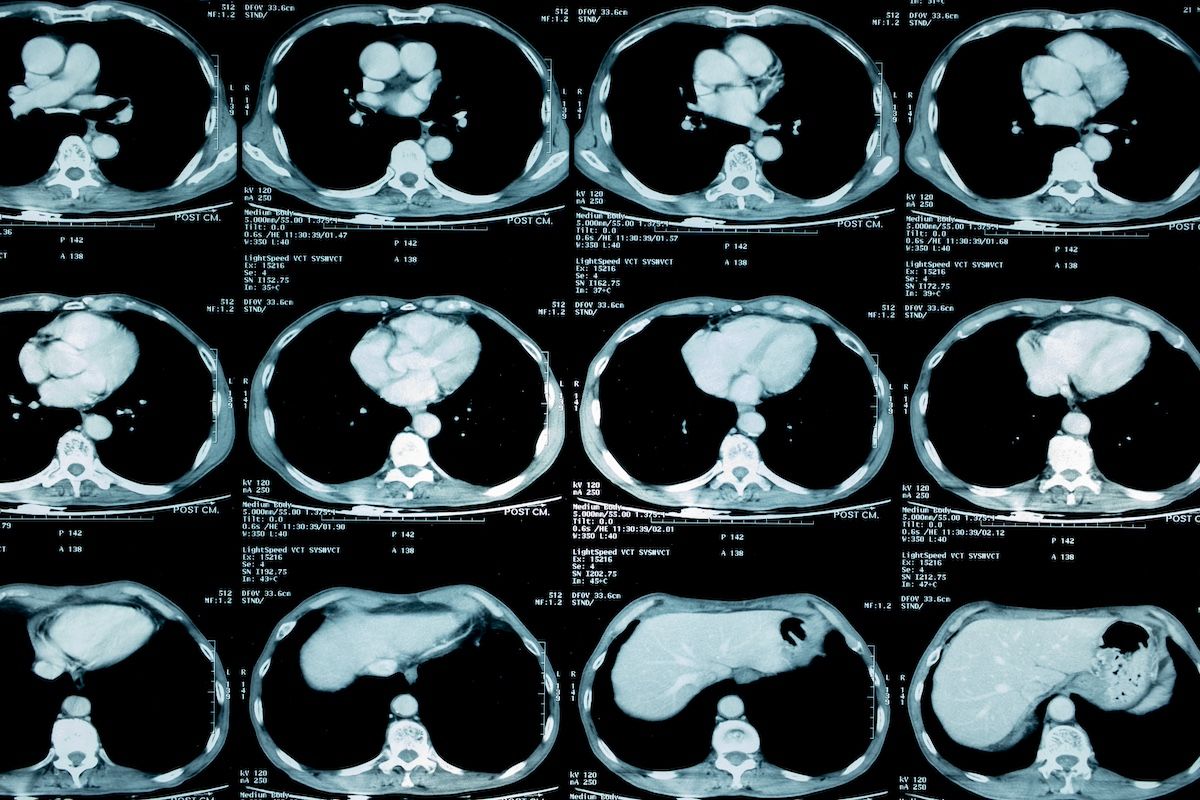- Center on Health Equity & Access
- Clinical
- Health Care Cost
- Health Care Delivery
- Insurance
- Policy
- Technology
- Value-Based Care
Broader Studies Needed on Lung Cancer Biopsy Decisions
This investigation sprung from a lack of current knowledge on the impact of nonmalignant results following thoracic surgery for lung cancer, according to the authors.
Investigators from Penn Medicine are recommending that larger study populations include patient, clinician, and site factors to best assess why and how the green light is given to pursue thoracic surgical biopsy (TSB) among individuals screened for lung cancer, according to cross-sectional study findings presented at the recent 2024 American Thoracic Society international conference.1
Of this patient population, all underwent TSB between January 2015 and June 2021, had not been diagnosed with lung cancer or extrathoracic metastatic disease, and were identified through their electronic medical records. Those in the malignancy cohort were slightly older (68.3 years vs 65.1 years [P = .09]); female patients made up most of this cohort (55%), while male patients made up most of the nonmalignant resection cohort (85.2%). Most of the overall group was White (71.4% of the malignant cohort and 80% of the nonmalignant cohort) and former smokers (75% and 69.2%, respectively). The investigation began with 80 patients who had a screening low-dose lung CT (LDCT), before being whittled down to 54 after 24 patients were found to have preoperative lung cancer and 2, metastatic disease.
In this analysis, most patients had surgery followed by 4 months of surveillance; 40 patients overall were diagnosed with a malignancy | Image Credit: kae2nata-stock.adobe.com

The study authors noted their investigation was important because of the risk of harm inherent in the high false positive rates they know of from LDCT, which can have downstream effects on patients should they undergo further evaluation for potential lung cancer, including surgery that proves to be unnecessary. According to the National Cancer Institute, the false positive rate is high because definitions of a positive lung cancer screen vary, which can lead to surgeries that are not only unnecessary but invasive as well; further, there is a higher likelihood of comorbidities among patients who have an LDCT, which experts say make them poor surgical candidates overall.2
Three procedures dominated following the LDCT. Most patients (46.3%) proceeded to surgery and followed that with 120 days of surveillance or presurgical bronchoscopy or transthoracic needle aspiration (TTNA), 29.6% had surgery but did surveillance first, and 24% had a nondiagnostic bronchoscopy or TTNA prebiopsy. From these procedures’ findings, the patients were divided into 2 groups. Fourteen patients were diagnosed with benign disease (25.9%; 95% CI, 14.9%-39.7%), and 40 patients were diagnosed with a malignancy (74%).
The authors noted that the nonmalignant, or benign disease, rate they saw (25.9%) echoed results of the National Lung Screening Trial (NCT00047385), which was 28%.3
The patients whose results were nonmalignant also had smaller nodules per LDCT (10.4 mm vs 15.5 mm; P = .01) and were most likely to be male (85.1% vs 45.0%; P = .01).
Mean (SD) Brock risk proportion score, which estimates pulmonary nodule risk for a positive cancer result,4 was 0.13 (0.12) in the group with malignancy and 0.18 (0.17) in the nonmalignant resection patient group (P = .26).
“Future studies,” they concluded, “should include broader populations and evaluate patient, clinician, and site factors that impact decisions to pursue surgical lung biopsy in patients screened for lung cancer.”
References
1. Caruso C, Kim RY, Zeb S, et al. Non-malignant resection rate in lung cancer screening: a cross-sectional analysis. Presented at: American Thoracic Society 2024 international conference; May 17-22, 2024; San Diego, CA. https://www.abstractsonline.com/pp8/#!/11007/presentation/9849
2. Lung cancer screening (PDQ)–health professional version. National Cancer Institute. Updated March 28, 2024. Accessed June 5, 2024. https://www.cancer.gov/types/lung/hp/lung-screening-pdq
3. National lung screening trial (NLST) screening (NLST). ClinicalTrials.gov. Updated May 20, 2014. Accessed June 5, 2024. https://clinicaltrials.gov/study/NCT00047385
4. Knipe H. Radiopaedia. Updated February 14, 2024. Accessed June 5, 2024. https://radiopaedia.org/articles/brock-model-for-pulmonary-nodules?lang=gb#:~:text=The%20Brock%20model%2C%20also%20known,CT%20scan%20is%20lung%20cancer
AI in Health Care: Balancing Governance, Innovation, and Trust
September 2nd 2025In this conversation with Reuben Daniel, associate vice president of artificial intelligence at UPMC Health Plan, we dive into how UPMC Health Plan builds trust with providers and members, discuss challenges of scaling AI effectively, and hear about concrete examples of AI's positive impact.
Listen
Infertility Coverage Boosts ART Use and Pregnancy Success: Richard A. Brook, MS, MBA
August 26th 2025In this episode, Richard A. Brook, MS, MBA, discusses his study showing that infertility treatment coverage increases assisted reproductive technology (ART) use and improves pregnancy outcomes.
Listen
